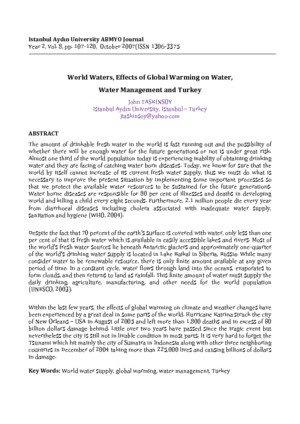- Suggested keywords :
- process(2)
- Pennsylvania(1)
- discovery(1)
- &(1)
- created(1)
List of Categories and SubCategories
Change Your Picture

Economic & Ecological Implications Of Hydraulic Fracturing
JOHN TASKINSOY
VIEWS
456
INFO
more

0
0
- Category : Environmental Studies
- Size : 615683
- By : JOHN TASKINSOY



Using Your Google Account
Google Login/Sign up
OR
Recover Your Password
Abstract
The Energy Information Administration (EIA) reports that the United States has abundant shale gas deposits and estimates it to be more than 1,744 trillion cubic feet (tcf) of technically recoverable shale gas, including 211 tcf of proved reserves. Technically recoverable unconventional gas (shale gas, tight sands, and coalbed methane) accounts for 60% of the onshore recoverable resource. At the U.S. production rates for 2007, about 19.3 tcf, the current recoverable resource estimates provide enough natural gas to supply the U.S. for the next 90 years. Separate estimates of the shale gas resource extend this supply to 116 years. The EIA says that shale gas production has increased 17-fold since 2000 to reach nearly 30% of dry gas production in 2011 in the United States. IPCC (2001), Intergovernmental Panel on Climate Change, reported that most of global warming in recent decades could be attributed to human activities causing significant increases in the amount of greenhouse gasses’ concentration in the atmosphere. IPCC also projected that the average global surface temperatures will continue to increase between 1.4 centigrade degrees and 5.8 centigrade degrees above 1990 levels, by the year 2100. Scott Kell, President of the Ground Water Protection Council (GWPC), said that “water and energy are two of the most basic needs of society. Our use of each vital resource is reliant on and affects the availability of the other. Water is needed to produce energy and energy is necessary to make water available for use. As our population grows, the demands for both resources will only increase.”
Recommended Papers

